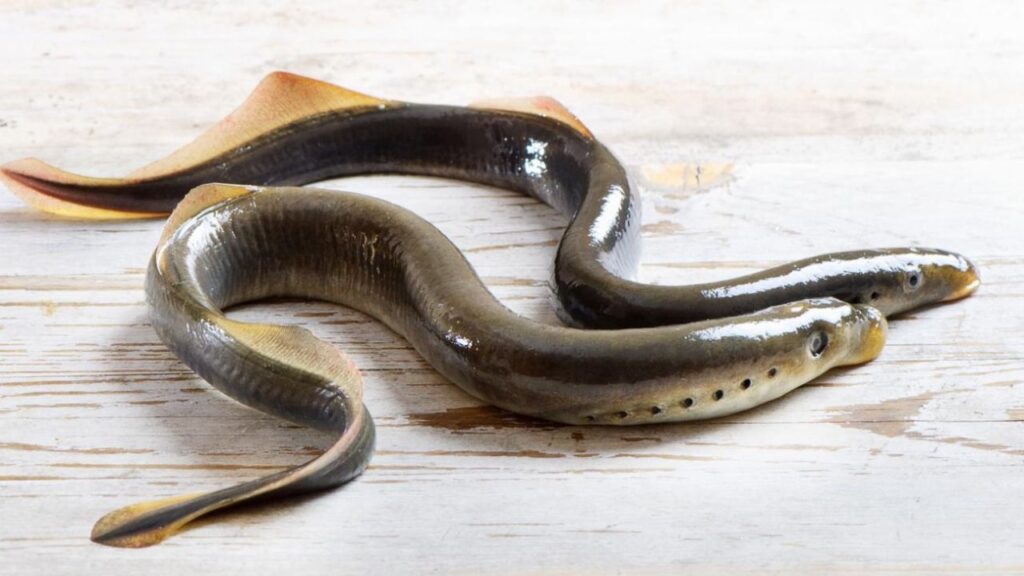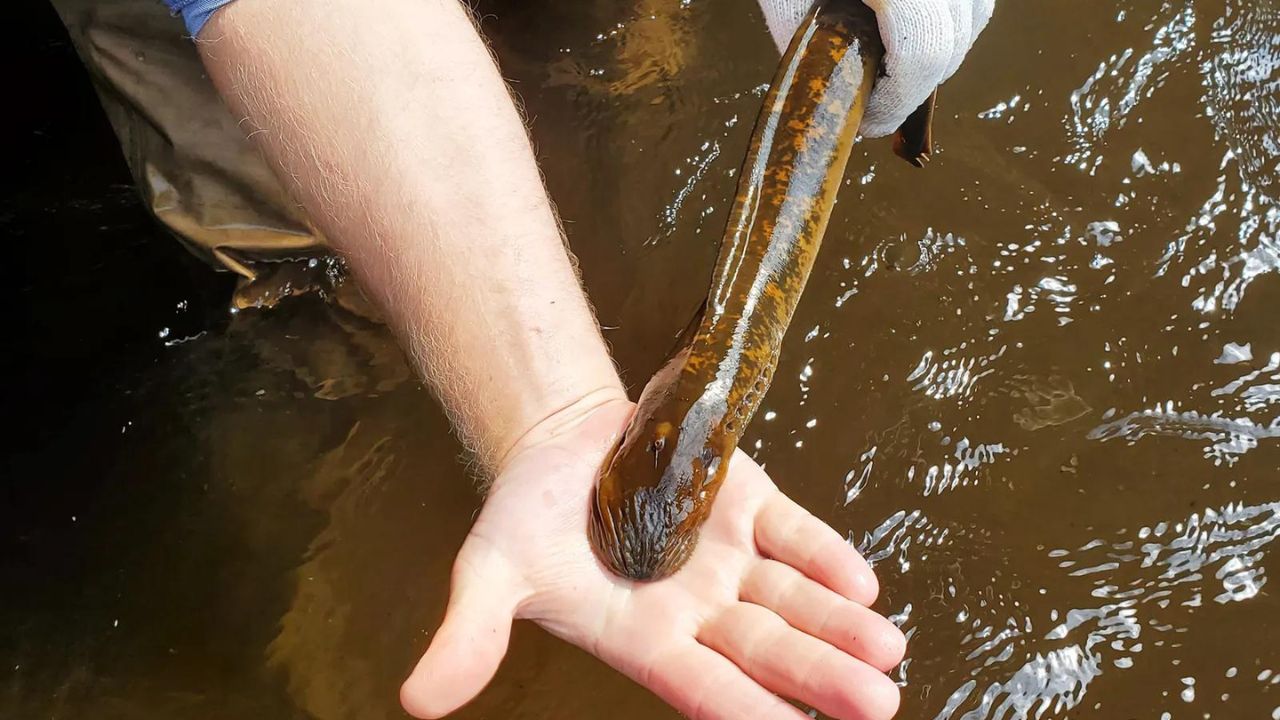Do Lampreys Attack Humans? Lampreys rarely attack humans, as they primarily feed on fish by attaching to them with their sucker-like mouths.
Lampreys are often misunderstood creatures that invoke fear due to their unique appearance and feeding habits. With their jawless mouths and circular rows of sharp teeth, they can appear quite menacing.
This has led to a common question: Do lampreys attack humans? In this article, we will explore the nature of lampreys, their behavior, and whether or not they pose any real threat to humans.
Understanding the truth behind these enigmatic creatures can help dispel myths and provide insight into their important role in aquatic ecosystems.
Contents
What Are Lampreys?
Description of Lampreys
Lampreys are ancient, eel-like fish known for their jawless mouths filled with concentric rings of sharp, horn-like teeth. [Do Lampreys Attack Humans?]
Unlike most fish, they do not have bones; their skeletons are made of cartilage. Lampreys have a sucker-like mouth that they use to latch onto other fish, making them parasitic in nature.
They belong to the class Agnatha, which is considered one of the oldest groups of vertebrates, existing for more than 360 million years.
Their snake-like bodies and intimidating mouths give them a prehistoric appearance, making them a subject of both fascination and fear among those who encounter them.
Lampreys go through a larval stage that lasts several years. During this time, they live buried in the sediment of rivers and streams, where they filter-feed on microscopic organisms.
After this larval stage, they transform into their adult form, where they become parasitic and develop their famous suction-cup mouths. [Do Lampreys Attack Humans?]
Habitat and Distribution
Lampreys can be found in freshwater and coastal regions around the world. There are approximately 38 known species of lampreys, and they are especially common in the North Atlantic region, including the Great Lakes in North America.
Some species are anadromous, meaning they migrate from the ocean to freshwater rivers to spawn, while others live entirely in freshwater. [Do Lampreys Attack Humans?]
Anadromous lampreys spend most of their adult life in the sea but migrate upstream to rivers and streams to lay their eggs, similar to salmon.
Lampreys are known for their resilience and adaptability to different water conditions. They thrive in various environments, from the cold waters of the northern Atlantic to warmer river systems.
Because of their migratory nature, lampreys can be found across continents, making them one of the most widespread jawless vertebrates. Their ability to survive in diverse environments has contributed to their success as a species.
Do Lampreys Attack Humans?
Lampreys’ Feeding Behavior
Lampreys are parasitic and primarily feed on fish. They attach to their host using their suction-cup-like mouths and rasp away at the skin to feed on blood and bodily fluids. This feeding behavior is specifically adapted to fish and not to humans.
Lampreys typically target fish such as trout, salmon, and other freshwater species, using their teeth to create wounds through which they consume their blood. This feeding mechanism is not designed to attack or feed on human flesh.
Lampreys rely on their powerful suction ability and sharp teeth to latch onto their hosts. Their feeding method is gruesome but highly effective in aquatic environments.
This natural adaptation allows them to survive in the wild without needing to attack larger creatures like humans. [Do Lampreys Attack Humans?]
Lampreys’ feeding behavior aligns with their ecological role, and they have no evolutionary advantage or need to attack humans.
Cases of Human Encounters
While rare, there have been cases of lampreys mistakenly attaching to humans. These incidents are not attacks but rather accidents, where the lamprey may have been disoriented or attracted to movement in the water.
In such cases, lampreys may latch onto a swimmer or diver, but they usually detach quickly upon realizing the “host” is not a fish. These encounters are generally harmless and are more startling than dangerous.
Most reported encounters happen in regions where lampreys are abundant, such as the Great Lakes. In these scenarios, lampreys might mistakenly attach to a person’s limbs or clothing.
These incidents are rare because lampreys do not seek out human hosts. However, the few documented cases have created a misconception that lampreys are a danger to swimmers.
The truth is that lampreys lack the physical capabilities and inclination to attack humans intentionally. [Do Lampreys Attack Humans?]

Are Lamprey Bites Dangerous?
A lamprey bite can cause discomfort due to their sharp teeth and suction, but they are not typically dangerous to humans.
Unlike fish, humans are not a natural food source for lampreys. The bites may leave small wounds or marks, but they are not venomous, and the risk of infection is low if properly treated. Most reported bites occur accidentally and do not pose serious health threats.
For a lamprey to successfully feed, it requires a specific type of host that it can latch onto for an extended period. Humans do not meet these criteria, making extended bites very unlikely.
Moreover, lampreys lack venom or toxins, so the primary concern from a bite would be minor bleeding or irritation. Proper first aid, such as cleaning the wound and applying an antiseptic, can easily prevent any complications.
Factors Influencing Lamprey Behavior Towards Humans
Several factors can influence lamprey behavior towards humans, including environmental conditions, the presence of other fish, and water disturbances.
Lampreys may be more active or aggressive when their natural habitat is disturbed or when they feel threatened. However, they are generally more interested in finding fish rather than interacting with humans.
Environmental factors like temperature, breeding cycles, and food scarcity can sometimes make lampreys more noticeable in areas populated by humans.
During their breeding season, they might appear closer to shorelines and riverbanks. Despite their presence, lampreys are not known to seek out humans. Their primary objective remains finding suitable fish hosts.
Can Lampreys Spread Diseases to Humans?
There is no evidence to suggest that lampreys can transmit diseases to humans. While they can cause minor wounds, these are usually superficial and do not result in significant infections if treated properly. Lampreys are not known to carry pathogens that affect human health.
The primary risk associated with a lamprey bite would be from a secondary bacterial infection, which is easily preventable with proper wound care.
Furthermore, lampreys do not inject any harmful substances into their hosts, unlike some other parasitic creatures. [Do Lampreys Attack Humans?]
Their feeding process is purely mechanical, relying on suction and the abrasion of their teeth. This further reduces the risk of any disease transmission to humans, reinforcing the fact that lampreys do not pose a significant health threat.
Ecological Role of Lampreys
Importance in Aquatic Ecosystems
Lampreys play a crucial role in aquatic ecosystems. They help maintain the balance of the ecosystem by preying on weaker or diseased fish, which helps keep the fish population healthy.
This natural predation can be beneficial for controlling fish populations and preventing overpopulation of certain species in freshwater ecosystems. [Do Lampreys Attack Humans?]
Their presence also contributes to the food web dynamics. Predatory fish, birds, and other wildlife often feed on lampreys, making them an important food source in their respective ecosystems.
By feeding on lampreys, these predators help control their populations, preventing them from becoming overly abundant.
Lampreys as Indicators of Environmental Health
Lampreys are often considered indicator species, meaning their presence or absence can signify the health of an aquatic environment.
Since they are sensitive to changes in water quality, pollution, and habitat destruction, their presence indicates a relatively healthy and stable aquatic ecosystem. Conversely, a declining lamprey population may suggest environmental degradation.
As filter feeders in their larval stage, lampreys contribute to the overall quality of water systems. They act like natural water filters, removing particulate matter from the water, which further emphasizes their ecological importance.
The study of lamprey populations can provide valuable insights into the ecological state of freshwater and coastal habitats. [Do Lampreys Attack Humans?]

Myths and Misconceptions About Lampreys
Common Myths About Lamprey Attacks
There are several myths and misconceptions about lamprey attacks, mainly fueled by their eerie appearance and the occasional encounter with humans.
Some people believe lampreys actively seek out humans to feed on them, which is far from the truth. These myths are often perpetuated by sensational stories or misinterpretations of rare incidents.
Movies, folklore, and sensational media coverage often contribute to the misrepresentation of lampreys as bloodthirsty creatures.
These depictions rarely align with scientific observations and have contributed to their undeserved reputation as dangerous animals.
Understanding Lampreys’ True Behavior
In reality, lampreys are not aggressive towards humans. Their feeding habits are specifically adapted to fish, and they do not have the capacity to view humans as a viable food source.
Most interactions between lampreys and humans are accidental and harmless. Understanding their true behavior helps in dispelling unnecessary fears about these ancient creatures.
Scientists and ecologists who study lampreys often emphasize their role in the ecosystem rather than their potential threat. [Do Lampreys Attack Humans?]
As more is understood about their behavior and biology, the fear associated with these unique creatures is gradually being replaced with appreciation.
Cultural Significance of Lampreys
Lampreys in Human History and Culture
Throughout history, lampreys have had varied interactions with humans. In medieval Europe, lampreys were considered a delicacy and were often consumed by nobility.
King Henry I of England reportedly died from eating a “surfeit of lampreys,” highlighting their significance in royal diets.
In some cultures, lampreys were believed to have medicinal properties, and their unique biology was a subject of curiosity and study.
Modern-Day Interest in Lampreys
Today, lampreys are often featured in documentaries, scientific studies, and aquariums to educate the public about their ecological importance.
Efforts to manage invasive lamprey populations, especially in places like the Great Lakes, have sparked interest in understanding these creatures better.
Lampreys continue to capture the imagination of scientists, environmentalists, and enthusiasts. [Do Lampreys Attack Humans?]
See Also: Do Baboons Attack Humans? Living in Fear!
Final Verdict
In conclusion, lampreys do not pose a significant threat to humans. While they are parasitic and feed on fish, they rarely interact with humans and even more rarely bite them. When they do, it is usually accidental and not harmful.
The fear of lampreys attacking humans is largely based on myths and misconceptions rather than factual evidence. [Do Lampreys Attack Humans?]
These ancient creatures play a vital role in our ecosystems and should be appreciated for their ecological contributions rather than feared.
FAQs
Can lampreys kill humans?
No, lampreys are not capable of killing humans. Their feeding habits are adapted to fish, and they do not target humans as prey.
What should you do if a lamprey attaches to you?
If a lamprey attaches to you, remain calm and gently remove it by breaking the suction. Clean the area thoroughly to prevent infection.
How can you avoid lamprey encounters?
To avoid encounters, stay out of known lamprey habitats during their active feeding seasons, and avoid stirring up the water.
Are all lamprey species parasitic?
No, not all lamprey species are parasitic. Some do not feed after reaching adulthood and die shortly after spawning. [Do Lampreys Attack Humans?]
What is the ecological role of lampreys?
Lampreys help maintain balance in aquatic ecosystems by controlling fish populations and serving as indicators of environmental health.
Conclusion: Do Lampreys Attack Humans?
Lampreys are fascinating creatures with a unique place in the aquatic world. While they may appear frightening, they are not a danger to humans.
By understanding their behavior, ecological role, and cultural significance, we can appreciate these ancient creatures without unnecessary fear.
Lampreys remind us of the diversity and complexity of life in our water bodies and the importance of maintaining healthy ecosystems.
They are a testament to the richness of aquatic life and the wonders of evolutionary adaptation. [Do Lampreys Attack Humans?]

Hello, I am Rosa Ellis, a mother of two and a wildlife blogger. I grew up in New York City, but I love exploring forests. I’ve traveled to places like Yellowstone National Park and the Amazon Rainforest to see animals up close. I know a lot about animal behavior and which animals can be dangerous to humans. Thanks for visiting my blog!

